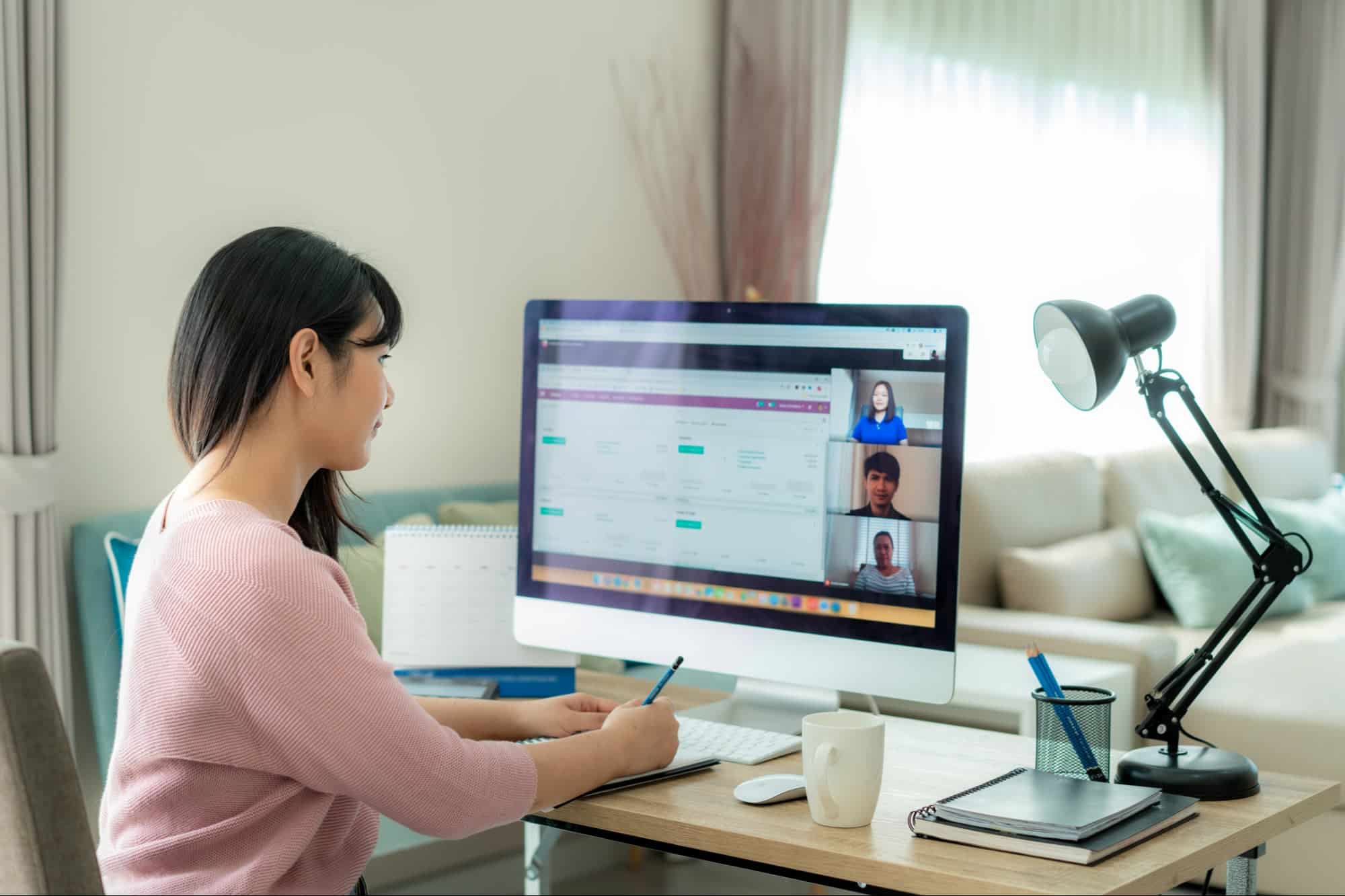
The rise of remote work has brought significant changes to how teams collaborate. While remote work offers flexibility and convenience, it also presents unique challenges in maintaining effective communication and collaboration. Enhancing team collaboration in a remote work environment requires intentional strategies and tools to ensure that team members remain connected, engaged, and productive. This article explores top strategies to foster a collaborative remote work culture, emphasizing the importance of communication, technology, trust, and engagement.
Effective communication is the cornerstone of successful remote collaboration. In a traditional office setting, employees can easily communicate face-to-face, but remote work requires different methods to bridge the communication gap. Regular video conferences, instant messaging, and collaboration tools are essential for maintaining clear and open communication. It’s important to establish a communication plan that includes scheduled meetings, preferred communication channels, and guidelines for response times. This ensures that everyone is on the same page and reduces the risk of misunderstandings and delays.
Another critical aspect of communication is providing feedback. Regular feedback helps team members understand their performance, identify areas for improvement, and stay aligned with the team’s goals. Encouraging an open feedback culture where team members feel comfortable sharing their thoughts and suggestions can significantly enhance collaboration. Tools like virtual whiteboards and collaborative documents can facilitate real-time feedback and brainstorming sessions, making remote meetings more interactive and productive. Rowland Alexander, founder of Which Pad, mentions, “Effective communication and regular feedback loops have drastically improved our remote team’s synergy.”
Utilizing Technology to Enhance Collaboration:
Technology plays a pivotal role in enabling remote collaboration. A variety of digital tools and platforms are available to help teams stay connected and work together effectively. Project management software like Asana, Trello, and Monday.com can help teams organize tasks, set deadlines, and track progress. These tools provide a centralized platform where team members can collaborate on projects, share updates, and ensure that everyone is aware of their responsibilities.
Communication tools such as Slack, Microsoft Teams, and Zoom are essential for facilitating real-time communication. These platforms offer features like chat, video conferencing, and file sharing, which are crucial for maintaining seamless communication. Additionally, cloud storage solutions like Google Drive and Dropbox allow team members to access and collaborate on documents from anywhere, ensuring that important information is always accessible. By leveraging these technologies, remote teams can overcome the challenges of distance and work together efficiently. Carl Panepinto – Head of Marketing at Sealions, emphasizes, “The right technology has transformed our remote operations, making collaboration as seamless as it was in the office.”
In addition to using these tools, it’s important to provide training and support to ensure that all team members are comfortable using them. Regular training sessions can help employees understand the features and capabilities of the tools, enabling them to use them effectively. Providing technical support can also address any issues that arise, ensuring that technology enhances rather than hinders collaboration.
Building Trust and Accountability:
Trust and accountability are essential components of a collaborative remote work environment. When team members trust each other and feel accountable for their work, they are more likely to collaborate effectively and achieve common goals. Building trust starts with creating a transparent and inclusive work culture where team members feel valued and respected. This includes regular check-ins, one-on-one meetings, and team-building activities that help strengthen relationships and foster a sense of community.
Setting clear expectations and goals is also crucial for building accountability. When team members understand what is expected of them and have clear goals to work towards, they are more likely to stay focused and motivated. Regular progress updates and performance reviews can help ensure that everyone is on track and address any issues that arise. Recognizing and rewarding achievements can further reinforce accountability and motivate team members to perform at their best. Jessica Shee from iboysoft.com notes, “Building trust and setting clear expectations have been game-changers for our remote team collaboration.”
Encouraging autonomy and empowering team members to make decisions can also enhance trust and accountability. When employees feel trusted to manage their work and make decisions, they are more likely to take ownership of their tasks and collaborate effectively with others. Providing opportunities for professional development and growth can also help build trust and show team members that the organization is invested in their success.
Encouraging Engagement and Inclusivity:
Engagement and inclusivity are critical for fostering a collaborative remote work culture. Engaged employees are more likely to be productive, innovative, and committed to their work. To enhance engagement, it’s important to create a work environment where team members feel connected and involved. This can be achieved through regular team meetings, virtual social events, and collaborative projects that bring team members together.
Inclusivity is also essential for fostering a collaborative culture. Ensuring that all team members feel included and valued, regardless of their location, background, or role, can significantly enhance collaboration. This includes promoting diversity and inclusion initiatives, providing equal opportunities for all team members, and creating a supportive and respectful work environment. Encouraging open communication and actively seeking input from all team members can also help ensure that diverse perspectives are heard and valued. Natalia Dávila Merlo, Content Marketing Manager at Ling, shares, “Fostering engagement and inclusivity has helped our remote team stay connected and motivated.”
Providing opportunities for social interaction and team bonding can further enhance engagement and inclusivity. Virtual team-building activities, such as online games, virtual coffee breaks, and team challenges, can help build relationships and create a sense of camaraderie. Encouraging informal communication through chat channels and social media groups can also help team members stay connected and engaged.
Continuous Improvement and Adaptation:
Continuous improvement and adaptation are key to maintaining effective collaboration in a remote work environment. As the needs and dynamics of the team evolve, it’s important to regularly assess and adjust collaboration strategies to ensure they remain effective. This includes soliciting feedback from team members, monitoring performance metrics, and staying informed about new tools and best practices.
Implementing a continuous improvement process involves regularly reviewing and refining collaboration practices. This can include conducting regular surveys to gather feedback from team members, holding retrospectives to discuss what is working well and what needs improvement, and staying updated on the latest trends and technologies in remote work. By continuously seeking ways to enhance collaboration, organizations can stay agile and responsive to the changing needs of the team. Mark Osborne, Director of Orangeries UK, states, “Our commitment to continuous improvement has been crucial in adapting our collaboration strategies to meet the evolving needs of our remote team.”
Adapting to new challenges and opportunities is also crucial for maintaining effective collaboration. This includes being open to trying new tools and techniques, experimenting with different communication and collaboration methods, and being flexible in response to changing circumstances. Encouraging a culture of innovation and continuous learning can help teams stay ahead of the curve and maintain high levels of collaboration and productivity.
Conclusion:
Enhancing team collaboration in remote work environments requires a multifaceted approach that includes effective communication, utilizing technology, building trust and accountability, encouraging engagement and inclusivity, and continuous improvement and adaptation. By adopting these strategies, organizations can create a collaborative culture that supports remote work and ensures that team members remain connected, engaged, and productive. As remote work continues to evolve, it is essential to remain flexible and responsive to the changing needs of the team. By prioritizing collaboration and continuously seeking ways to improve, organizations can successfully navigate the challenges of remote work and achieve their goals.



